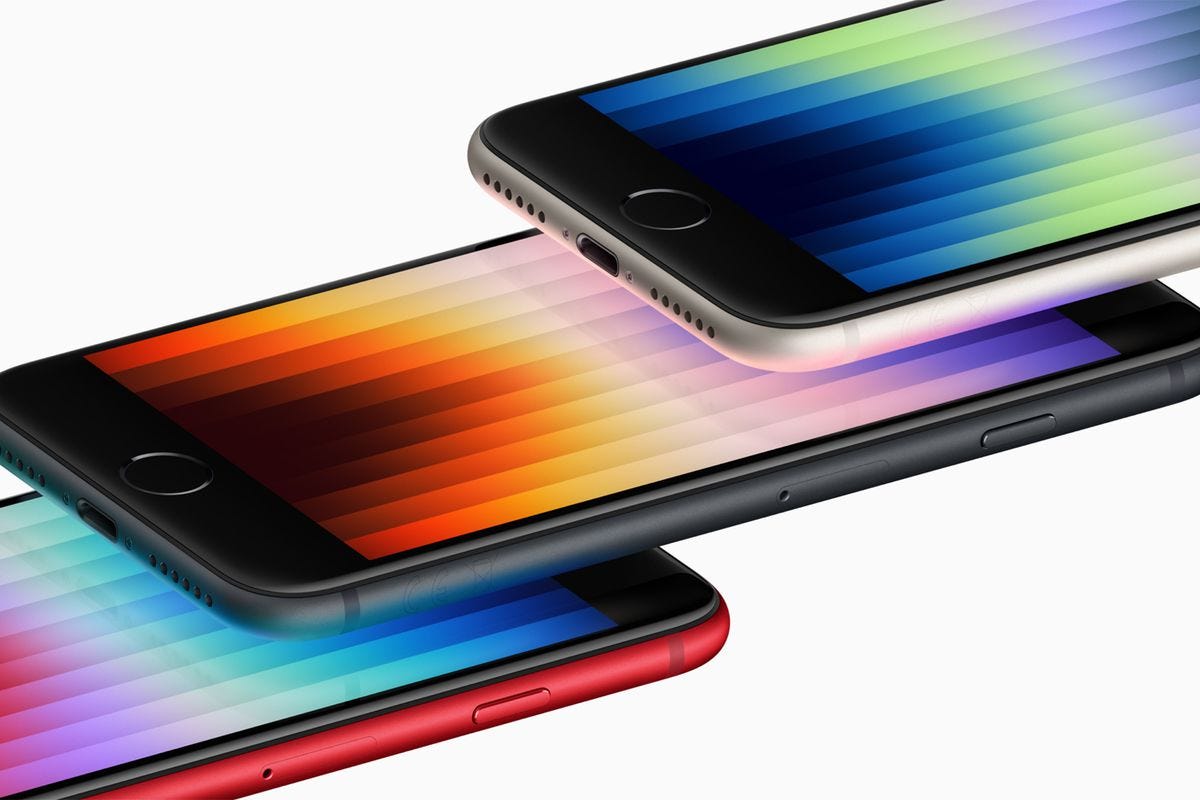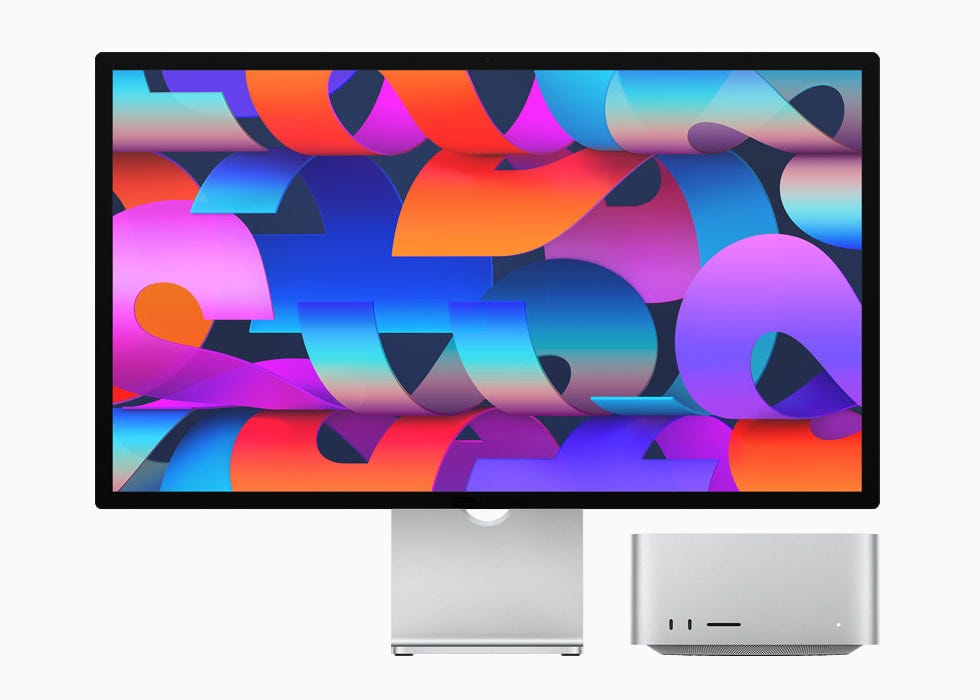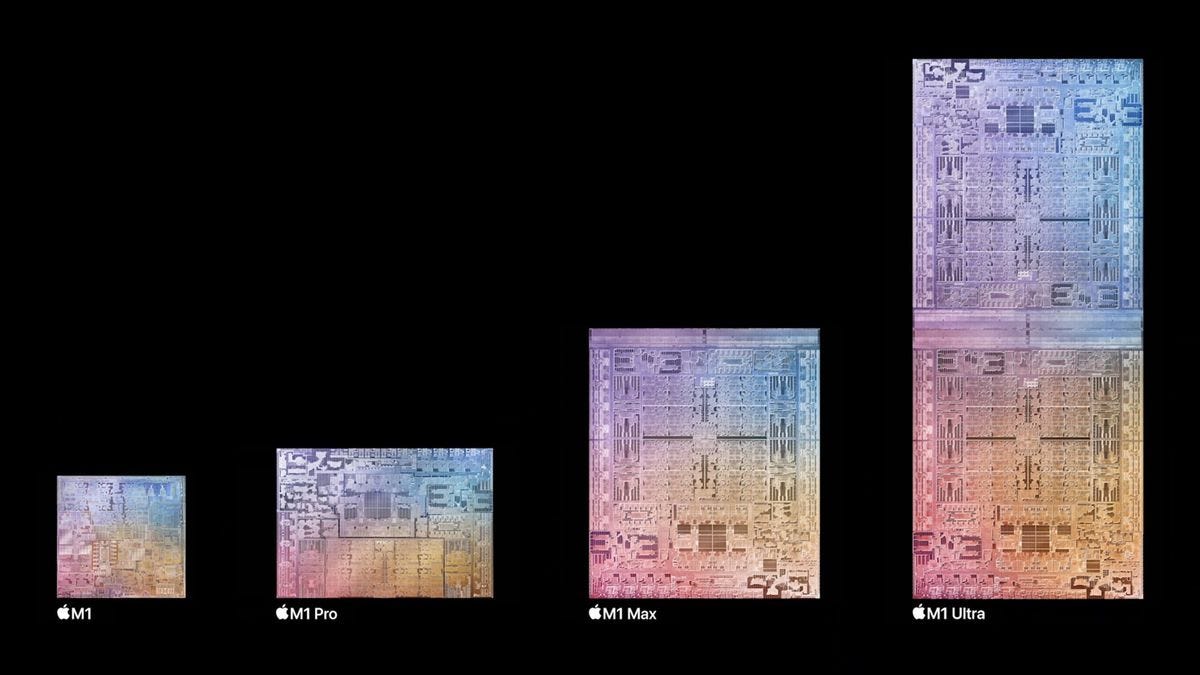'Peek' Performance in Review
My thoughts on Apple's March 8 announcements. Plus, an Apple strategy shift I am noticing...
Hello, and welcome to the first edition of Ben’s Bytes. Thanks for joining me on this adventure. I’ve got some thoughts and a summary of Apple’s Peek Performance special event from March 8, so this is a long one. If you’re rushed for time, I recommend reading the intro, and then skipping to the product section that “peaks” your interest. Let’s get started…
For years Apple’s strategy has been to tell users what they want. Steve Jobs often recited the famous Wayne Gretzky quote “I skate to where the puck is going, not where it is” line, and Apple’s new product strategy revolves around the age-old Henry Ford adage of not relying on user focus groups; after all, in the 19th century, consumers would have asked for faster horses, not cars...
"It's really hard to design products by focus groups. A lot of times, people don't know what they want until you show it to them." - Steve Jobs
In more recent years (I’m calling it the 2015-2019 era), this strategy extended to the detriment of already established Apple products, resulting in a series of divisive decisions. Convenient ports like SD card slot, HDMI, headphone jacks, and even a traditional/functional keyboard were unceremoniously booted from Apple products. And let’s not talk about how the Magic Mouse charges from the bottom, so it can’t be used while charging... In an ironic justiposition to Jobs’ mantra of “design isn’t just how it looks, it’s how it works”, it appears Apple became fixated on a just that; product thinness over all else.
In the past year, however, rounding out with this most recent March event, we have seen an about-face from Apple. While I don’t want to attribute this completely to the departure of Jony Ive, Apple’s famed industrial designer, I think he was definitely the “Chief Thinness Officer”. So what do I mean by this about-face? Firstly, Apple abandoned the disastrous butterfly keyboard design that Ive championed, for one that actually works when it gets a crumb in it. Next, both the iPhone 12 and iPhone 13 actually got thicker over the past two years resulting in, you guessed it, better battery life. As a consumer, I’d definitely opt for a few more hours of battery life if my phone has to be a few millimetres thicker.
Finally, Apple has totally reversed its position on the future of laptop connectivity. Starting with the 2015 Macbook Pro, Apple bet on a future of USB-C for everything (ushering in an era of dongle hell). I do think this is the future, but its a future that has taken longer to get to than Apple probably thought. As a result, in its most recent 14” and 16” Macbook Pros from Fall 2021, Apple added back an HDMI and SD card reader, and even its famed magnetic Mag-Safe charging port. The Mac Studio is an even bigger “we’re listening” moment. This net new Mac announced last week had been a fantasy of the Apple community for over 20 years, and features the largest array of ports on an Apple product since the early 2000s... plus, ports on the front… unheard of!?!?

I think Apple has learned that this “tell the consumer what they want” strategy may work for net new products (AR glasses anyone?), but for existing and beloved product lines, it might be good to listen to feedback every now and then. Now, onto the event...
iPhone SE:
The least sexy of Apple’s iPhone lineup (I call it the iPhone for grandparents), but one near and dear to many people, got a worthwhile, yet partially yawn inducing update. The iPhone SE 2022 is now on par with the iPhone 13 lineup, featuring an A15 chip and 5G capabilities (no mention of mmWave however). The new SE also features a larger battery, the stronger, crack-resistant glass featured on the iPhone 13, and an improved camera; although the improvements seem to be entirely driven by the A15, rather than any actual hardware upgrade.
So who is this device for? A phone featuring a physical home button and large bezels, like the SE still sports in 2022, makes its industrial design a little long in the tooth. Nonetheless, I know a few people who still can’t fathom using the post iPhone X home-buttonless design and Face ID; this device is for them (but I think this will be it for those remaining holdouts). It’s also for those looking to get into the iPhone lineup at a mid-tier smartphone price. At $5791, it features the best chip in a smartphone, and with Apple, you’ll be guaranteed to have software updates for 4+ years with iOS.
I’ve always thought that the holy grail for iPhone pricing is the vaunted $199 USD base price. This hypothetical iPhone would make major inroads in markets like India or Africa, where dirt-cheap Android devices own the market. I don’t know if the profit margins would’ve worked, but I would have been interested to see Apple keep the previous 2020 SE around in those select markets at a lower price. Especially because the new SE is $30 USD more expensive than the prior model (let’s just call that the 5G tax).
The iPhone 13 and 13 Pro also got a shiny new coat of paint; Green for the iPhone 13 and Alpine Green for the 13 Pro. I definitely prefer the matte Alpine Green look of the Pro, and it does bring back memories of the iPhone 11 Pro Midnight Green. I may be biased, but nothing will compare to the Violet Purple Apple introduced last spring for the iPhone 12.
iPad Air:
It had been a year-and-a-half since the last Air update, so the “best iPad for most people”, got an evolutionary update to bring it in line with the iPad Mini updates from this past September. The Air now features 5G capabilities if you opt for the Wi-Fi + Cellular model, Apple’s Center Stage feature for its front facing camera to automatically keep you in frame on your video calls. The big headline was that it got the M1 chip, not an A-series mobile chip. This means it now runs the same chip as the entry level MacBook models and the iPad Pro. This is definitely overkill, but who knows, this could be the year Apple brings us an iPad software experience that can take advantage of the powerful hardware these devices are equipped with.
As mentioned, this is the iPad that everyone should buy. I personally don’t know the benefit of the 11-inch iPad Pro versus this new Air. Both feature the same design, Apple pencil and Magic Keyboard support, the same processor, etc. If a 120 Hz Pro-Motion screen, an additional camera/lidar on the back, and Face ID are really worth the extra $250 to you, go for it!
Mac Studio and Studio Display:
The star of the show. For those that don’t follow Apple, fans have been calling for it to create the mythical xMac for years. This hypothetical desktop Mac would offer more power than the Mac Mini, but at a more affordable price than the high-end professional oriented Mac Pro (that starts at $7,499 and can be specced to over $60k!). Apple’s answer is the Mac Studio.
Starting at $2,499, the Mac Studio looks like two Mac Minis stacked on-top of each other. The base model comes with Apple’s powerful M1 Max chip, which it claims will offer 50% better performance over the current Mac Pro - am sure the professionals who spent the equivalent of a small car on their Mac Pro are not amused!
The Mac Studio also introduced the new generation of Apple Silicon: the M1 Ultra. The jump to the M1 Ultra in the Mac Studio will cost a pretty penny, starting at $4,999. With M1 Ultra, Apple has cracked the holy grail of chip architecture with UltraFusion. The M1 Ultra is basically two M1 Max chips attached together, but operating as one unified chip, rather than two chips that would require software makers to optimize for dual architecture. When Apple initially announced that they were transitioning to their in-house ARM chips and away from Intel, industry-watchers thought it would only be for their entry level Macs. With the M1 Pro/Max and now Ultra, Apple has shown they can now walk circles around Intel’s most powerful chips for desktop computers, offering more power at an unmatchable energy level (power/watt). I do not know how Intel will catch up and we haven’t even seen what Apple has in store for the Mac Pro.
Apple also announced a new display called the Studio Display. With a 5K resolution, 27” display, built-in 12 MP camera and Dolby Atmos Speakers, and an A13 Chip (this is basically an iPhone inside a monitor), it retails for $1,999. My reaction to this price is, “oh, that’s it?”, which should tell you about the state of Apple’s pricing, but it is much less than Apple’s Pro XDR Display at $6,299. Plus, I think there is something to be said about plugging in a monitor and getting everything you need, rather than having to worry about webcams, speakers, etc.
Apple’s Foray into Live Sports:
Apple also quietly announced their entrance into Live Sports on Apple TV+ with Friday Night Baseball. Kicking off when the MLB season starts, Apple’s streaming service will feature two MLB games every Friday during the regular season, in addition to pre and postgame programming. Subscribers in Canada and the US will also get 24/7 access to MLB replays, news, highlights and analysis. Live Sports is the next big frontier for these streaming services, and Apple also apparently has interest in buying the NFL Sunday Ticket now that DirecTV’s contract has ended...
That’s a wrap folks! This is definitely a longer edition than I was expecting, but it’s not every week that there is an Apple event. Appreciate any feedback, and stay tuned for the next edition!
Unless otherwise specified, the prices contained in my newsletter are in CAD.










